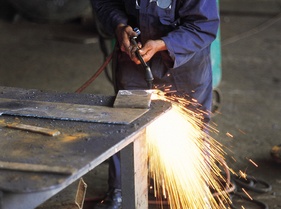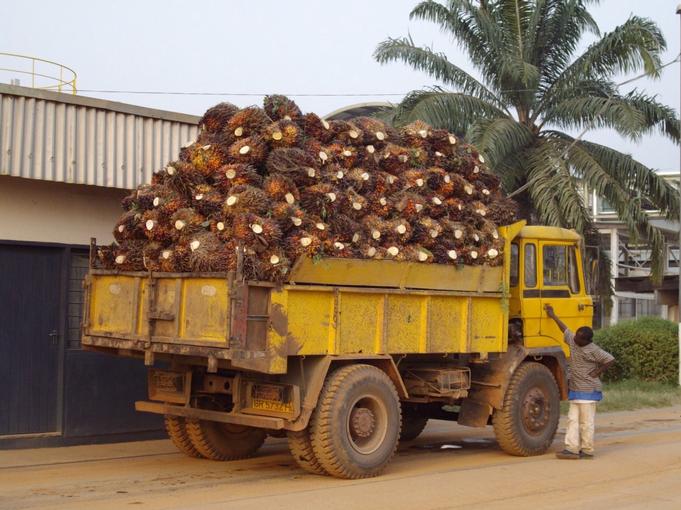














The industrial site of GOPDC comprises:
The fresh fruit bunches (FFB) are brought to the mill by trucks which are weighed on the weigh bridge before emptying their content in large cages at the offloading bay. These cages are placed into sterilizers. The sterilization (90 minutes steam at 3.0 bar) of the FFB is necessary for multiple reasons such as destroying oil-splitting enzymes, arresting hydrolysis and auto-oxidation and facilitating the digestion by weakening the pulp structure of the fruits.

The cages with sterilized fruit bunches are emptied in the thresher. Threshing is the process whereby fruits are separated from the bunches in a rotating drum. Thereafter the loose fruits are conveyed to a digester, while the empty fruit bunches (EFB) are returned to the plantation or used as boiler fuel.
In the digester, the palm fruits are pounded and turned into a mash which consists of mesocarp, fibers and nuts containing kernels. This mash is transferred to the screw press where oil is pressed out. The remaining fibers and nuts are recovered and dried.
The press liquor (oil, water, sand and impurities) is flowing to the continuously settling tank, where oil and sludge are separated due to sedimentation. The top phase (or clarified oil) is pumped into a centrifuge for final clarification. Before the crude palm oil (CPO) is ready for storage in the clear oil tank and further processing in the refinery and fractionation plant (see ‘Investment programme’), it passes through a vacuum dryer to reduce the moisture content in order to slow down hydrolysis and oxidation.
The bottom phase is the sludge which goes into the tricanter. There, the remaining oil is recovered, while palm oil mill effluent (POME) and solid waste are separated. The latter can be used as organic fertilizer in the plantation.

After digestion of the palm fruit and extraction of the palm oil from the mash, the nuts and fibers are recovered. First they are dried and subsequently separated from each other by the use of a cyclone system. The fibers are relatively light and are carried away by an upwards air flow, the nuts are relatively heavy and fall into a rotary drum. The fibers serve as fuel for the boiler. The nuts are transported to a silo where they are dried; this facilitates the cracking of nuts to recover the palm kernel. After being sent to the cracker, the shells are recovered and used as fuel for the boiler, whereas the palm kernels are transported to a silo where they are dried. The kernels are then ready for extraction of the crude palm kernel oil (PKO). The palm kernel cake (PKC) is sold as animal feed.














